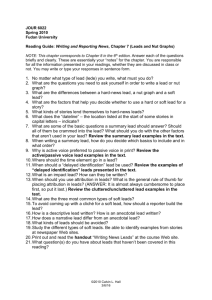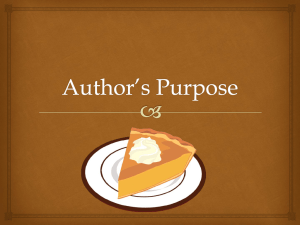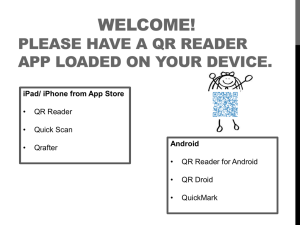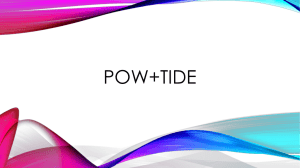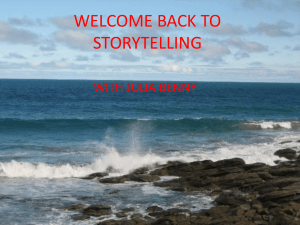Interviewing techniques
advertisement
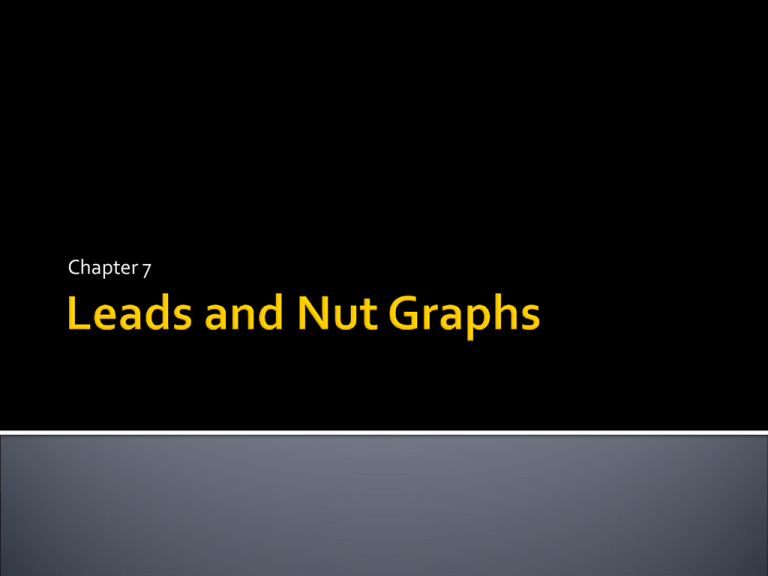
Chapter 7 The lead (aka lede) The beginning of the story that entices the reader Crucial in any medium ▪ Especially in today’s media environment ▪ ▪ ▪ ▪ Social media Print Broadcast Online The lead ▪ Tells the reader what the story is about Hard-News Leads ▪ Also called Summary leads Soft news leads ▪ Also called feature leads Nut Graphs ▪ Also called the focus graph Hard-News leads Aka - Summary leads ▪ Should answer several, but not necessarily ALL of the 5 W’s ▪ Choose the most important of the 5 W’s for the lead ▪ Save the others for the second or third paragraph Subject-Verb-Order ▪ Effective format for summary leads “Who did what” or “what happened” ▪ Avoid writing summary leads with clauses (pg 124) Order of information ▪ When writing a summary lead ▪ The point of emphasis should be the first or last words ▪ Decide which elements are the most important Point of emphasis ▪ Most of the time when writing a hard-news lead ▪ Put the most important info first ▪ Otherwise put it at the end of the lead Active vs Passive voice Active voice is preferred in print & broadcast ▪ Stresses who is doing the action Passive voice should be used ▪ When emphasis is on what happened instead of who Where to say “When” Time can be confusing in a lead ▪ For prior day events, when doesn’t come first ▪ When used, make sure it’s placed where accurate (pg 127) Delayed Identification When the who is not a well known person ▪ Identify them by age, location, occupation or other description in the lead. ▪ Identify them by name in the second paragraph Be aware of laws and newsroom policy about names of juveniles and criminal offenders Updated leads ▪ Used for stories that have already been introduced ▪ Provide immediacy for continuing stories Impact leads ▪ ▪ ▪ ▪ Explains how the reader & viewer will be affected Good for broadcast stories Help to make stories seem fresh and relevant Help to answer the question “So What” Attribution leads Tell the reader where you got your information Too much attribution can clutter a lead ▪ If you witnessed the information ▪ You can eliminate the lead ▪ If you received it from a source/interview ▪ Include attribution Soft lead Coaching tips ▪ Write multiple leads vs struggling to find the perfect one ▪ Make sure lead is related to focus and can be backed up ▪ Don’t strain to create a lead from your head ▪ Pull from the story to develop it Descriptive leads Describe a person, place or event Can be used for a news or feature story Anecdotal leads Starts with a story about a person or an event. All soft leads are anecdotal ▪ They are storytelling approaches Narrative leads Like anecdotal, tell a story with dramatic action ▪ To make readers feel like a witness to the event Use writing techniques of fiction including ▪ Dialogue ▪ Scene setting ▪ Forshadowing Other soft leads Soft leads can be written in many ways ▪ Focus on a person lead ▪ Contrast lead ▪ But-Guess-What contrast ▪ Then and now contrast ▪ ▪ ▪ ▪ ▪ ▪ Teaser lead Mystery lead Build on a quote lead List leads Question leads Cliché leads Leads to avoid Cluttered leads Good news/Bad news leads Crystal ball leads Nightmare leads Plop a person leads Weather-reports leads Stereotype leads Tips for finding your lead ▪ ▪ ▪ ▪ ▪ ▪ ▪ ▪ ▪ Reader interest Memorable item Focus on a person Descriptive approach Mystery approach Build on a quote Contrast Problem/Solution Narrative Storytelling
